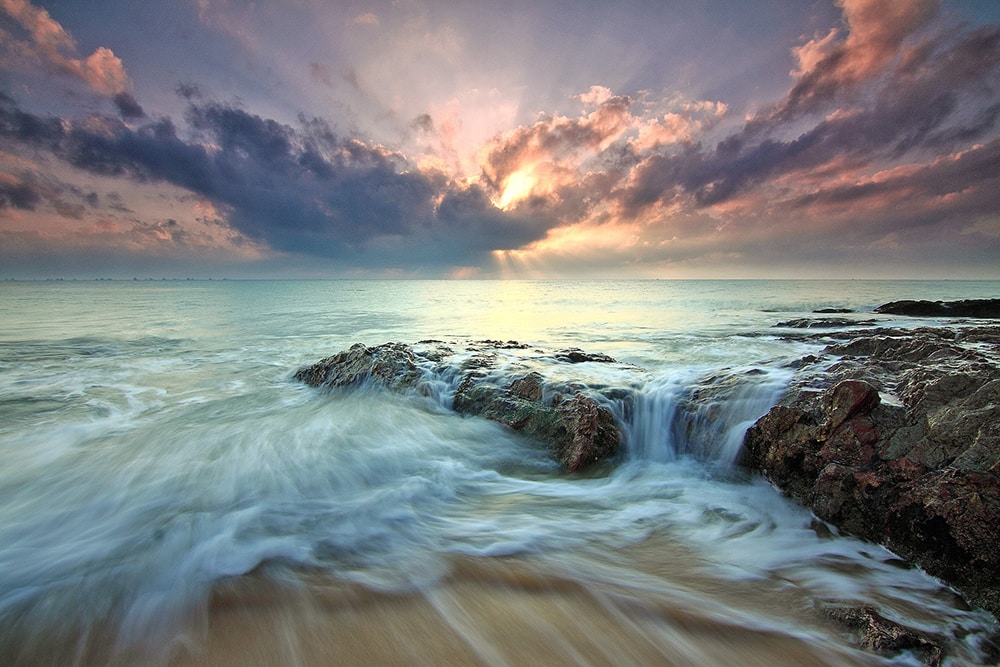Over the past weeks, we’ve all wondered when we’ll “get back to normal,” to life as it was before COVID-19. At the same time, some question whether we should settle for the “old” normal. Maybe we should aspire to come back better, smarter, stronger, and more resilient than before.
We could use this time to plan for change and growth. But how would we learn to do that? When has a crisis been managed and turned into strength and stability?
For the best examples, we could look to the longest-running, most successful R&D and innovation lab in the history of the world: Mother Nature, the earth herself. Since long before man, nature has constantly played and replayed cycles of growth, stability, crisis, reorder, and rebirth.
Nature only knows how to grow, respond, and adapt to the circumstances around her. Whether it’s meteors, ice sheets, earthquakes, volcanoes, wildfires, or humankind, nature meets challenges, evolves, and thrives. She will repeat these cycles long after we are gone.
Science tells us so. From the 1950s to the 2000s, ecologist C. S. Holling blended the study of nature with systems theory, simulation modeling, and social sciences to develop several new scientific ideas, one of which was called the “adaptive cycle.” With apologies to the great scientist, the adaptive cycle can be over-simplified to describe how nature adapts to crisis and survives. The practical application of the model is that it illustrates how human institutions can respond to challenges and thrive, as well.
The adaptive cycle is sometimes graphically described as the “infinity symbol.” Imagine an element of the natural world traveling through that figure. As it sweeps up from left to right, nature is growing and thriving. It is stable, conserving itself, and all is well. As that natural element gets to the top of the right-hand curve, it is in some circumstance of significant change, whether from fire, drought, flooding, or the like. The theory tells us that while in crisis, nature can be rigid and unchanging, or it can begin to respond (termed “release”). If rigid, it breaks and dies. If responsive, it is malleable, capable of change, and survives. By responding to the circumstance, it heads toward a moment of “breakthrough,” developing innovations by which it reorganizes and restructures itself. Now it heads to the second, left-hand curve of the symbol. This curve represents the moment of adaption when nature changes itself or its behavior in a manner to allow it to interact with its changed circumstance and live. Once adapted, the element of nature is back to where we started and in a stage of growth, then stability. We know from the model that it is also readying itself for the next crisis and adaptation. Through this cycle, nature is resilient.
One can see how the adaptive cycle has been applied to study and improve the resiliency of systems that we create: businesses, governments, churches, social structures. Each of these can have periods of growth and stability. Each invariably faces critical moments of challenge that require a response. We are at one of those inflection points now.
The COVID-19 pandemic is a tragedy. Our hearts go out to those who contract the virus, to their families, and to the millions who suffer financial harm in the lockdown. The terrible effects of the virus cannot be overstated. But, as in nature, this is a crisis that followed a period of stability. Now we are in a “time out” and have a chance to respond. We can hang on to “normal” as it was before. But that might be the “rigidity” mistake of the adaptive cycle. Or we can break down old ways of thinking (the “release”) and promote an environment for breakthroughs that lead to innovations and adaptations. The most pressing innovation will be a vaccine; but it could also be a reformed healthcare system, new housing policies, stable job markets, stronger social networks, or an equitable economy. Or all of that.
As I write this, it’s Earth Day, April 22. I’m looking southeast out my home office window on a cloudless, warm, spring day. The clean, clear air allows a view down the main channel of the harbor, to the breakwater, past Angel’s Gate, and on to a peaceful, blue Pacific. It is as if the ocean is saying “Watch me, here’s how I respond; see the challenges that lay ahead; adjust; embrace the chaos of change, find something that works, and go with that. Once you’ve figured it out, use your resources well, but don’t get complacent; you may need to do this again.”
I am sure she’s right. spt







Comments